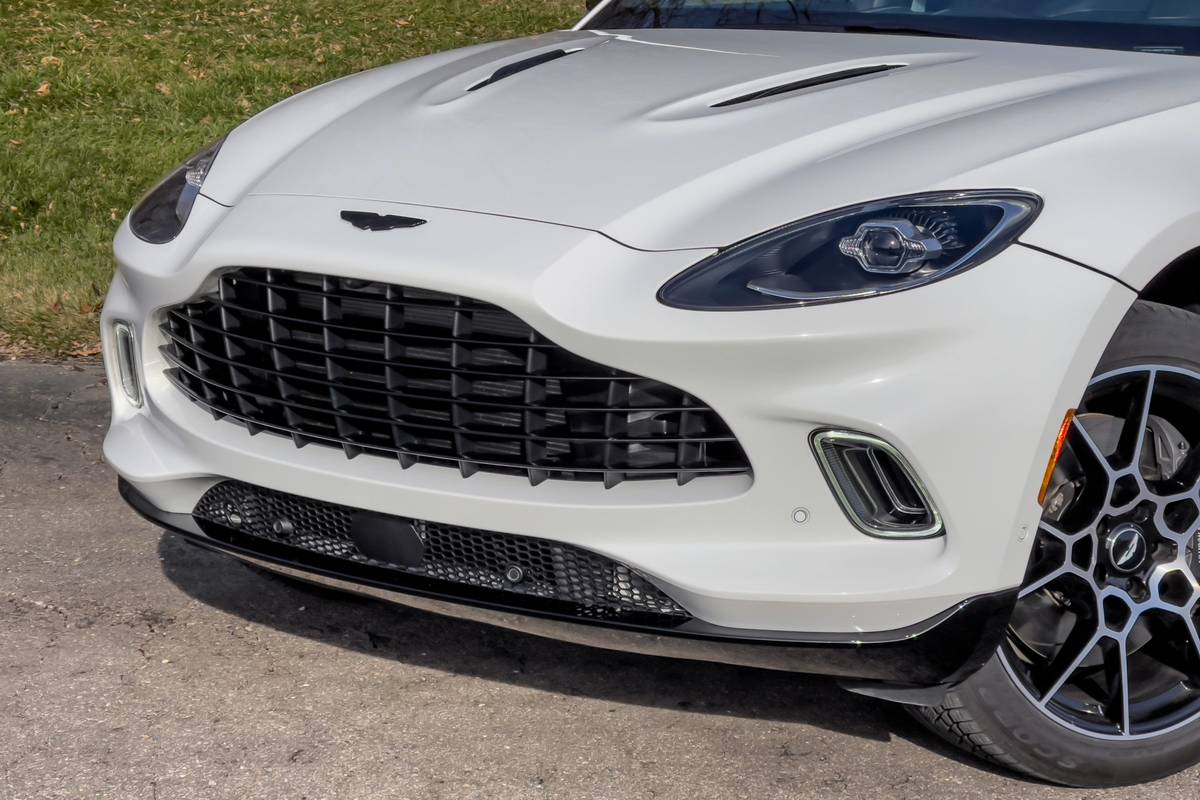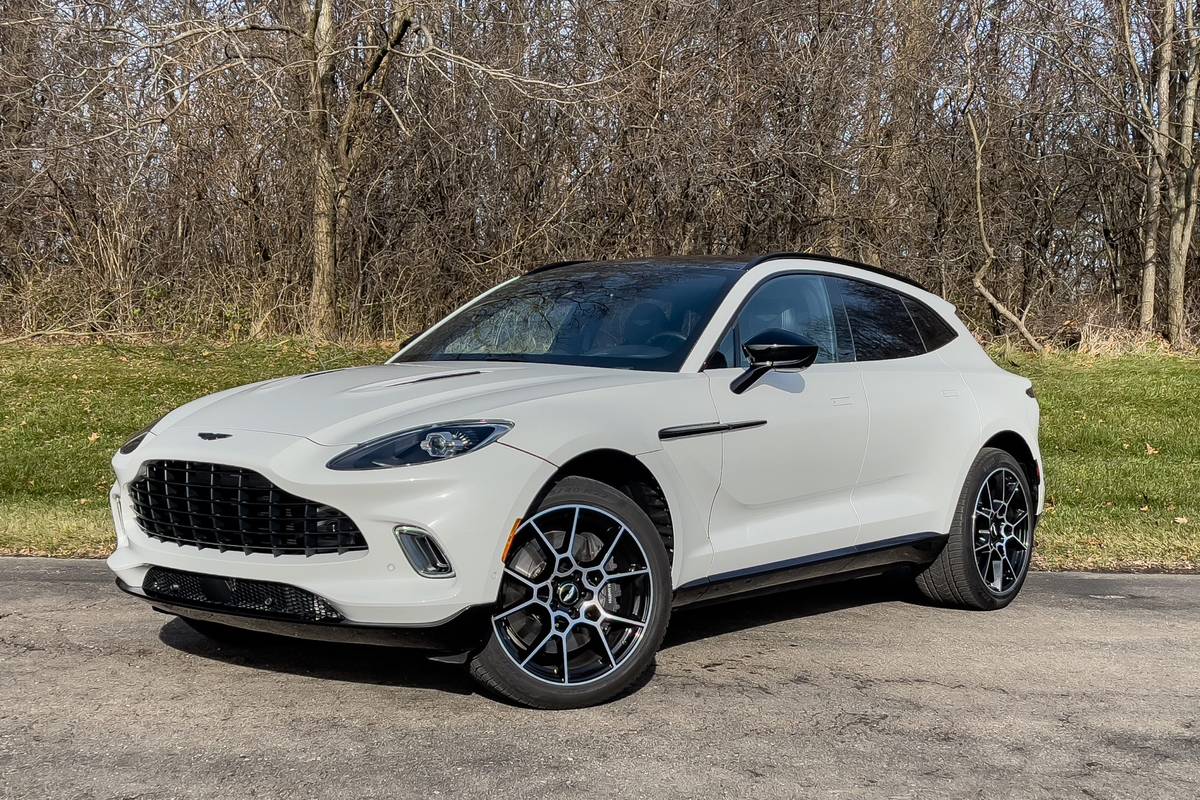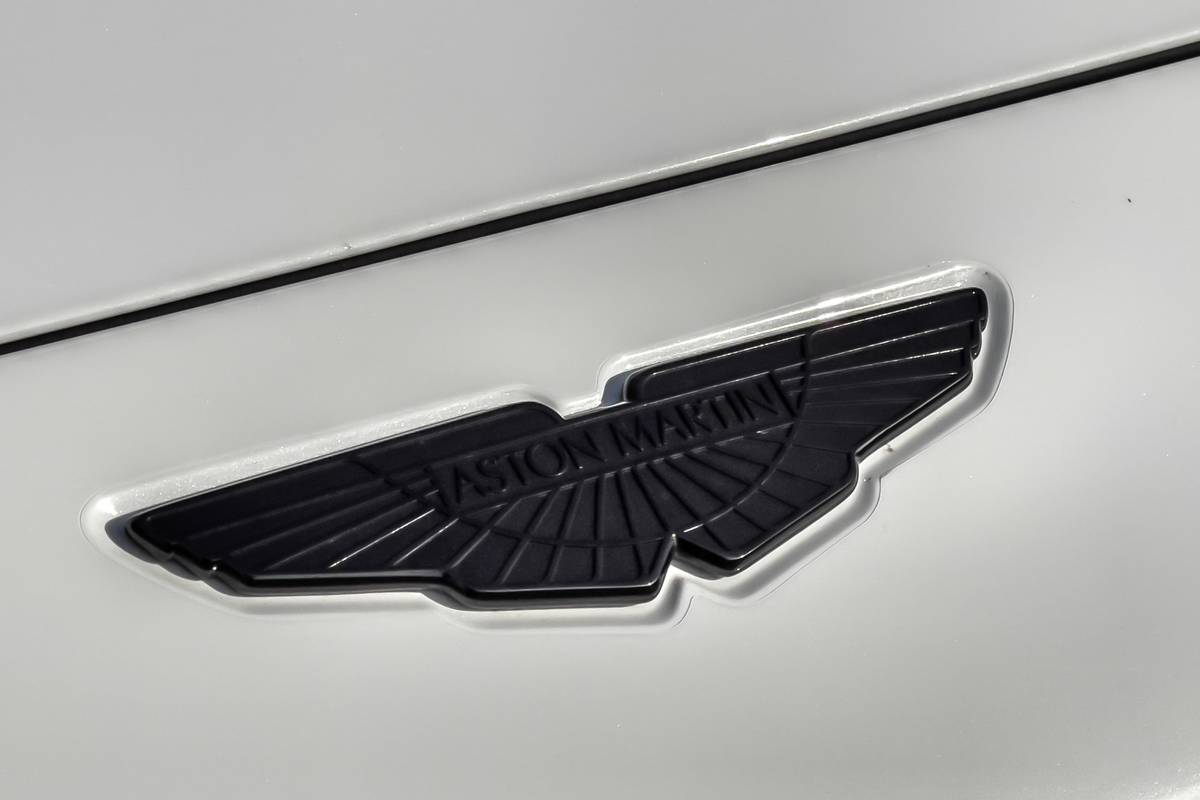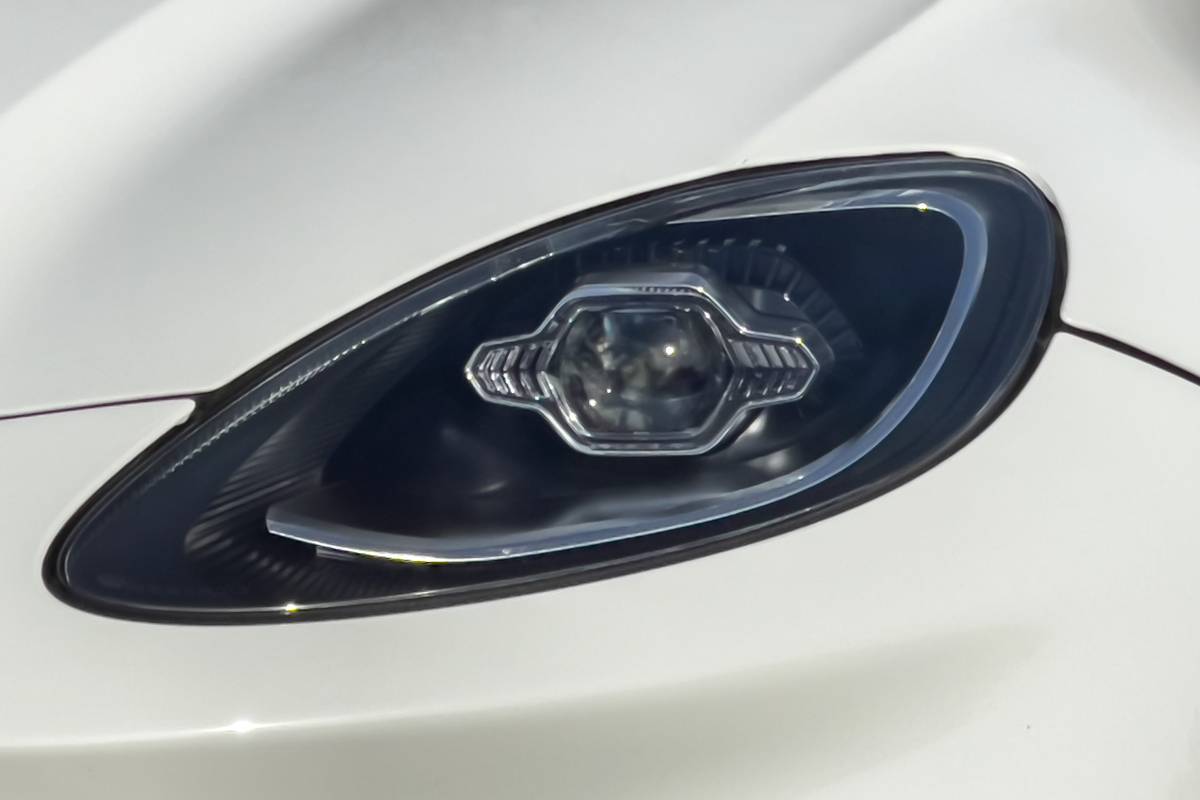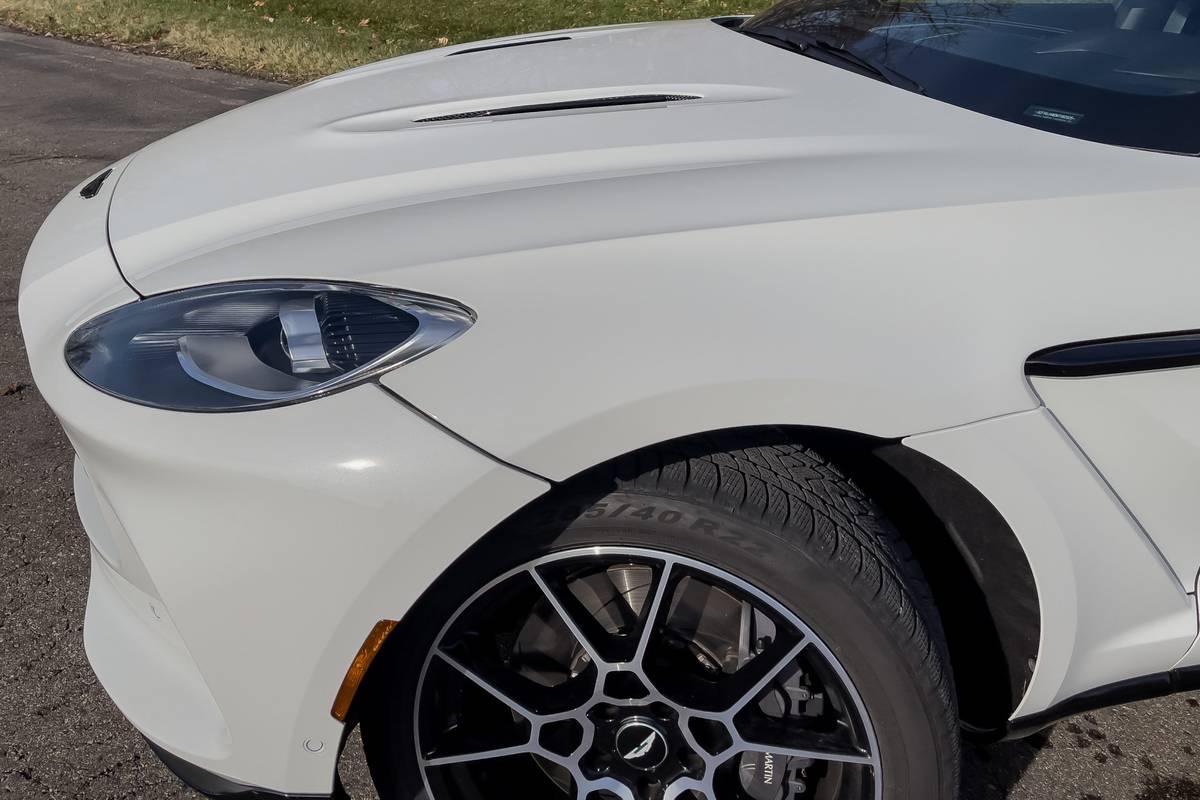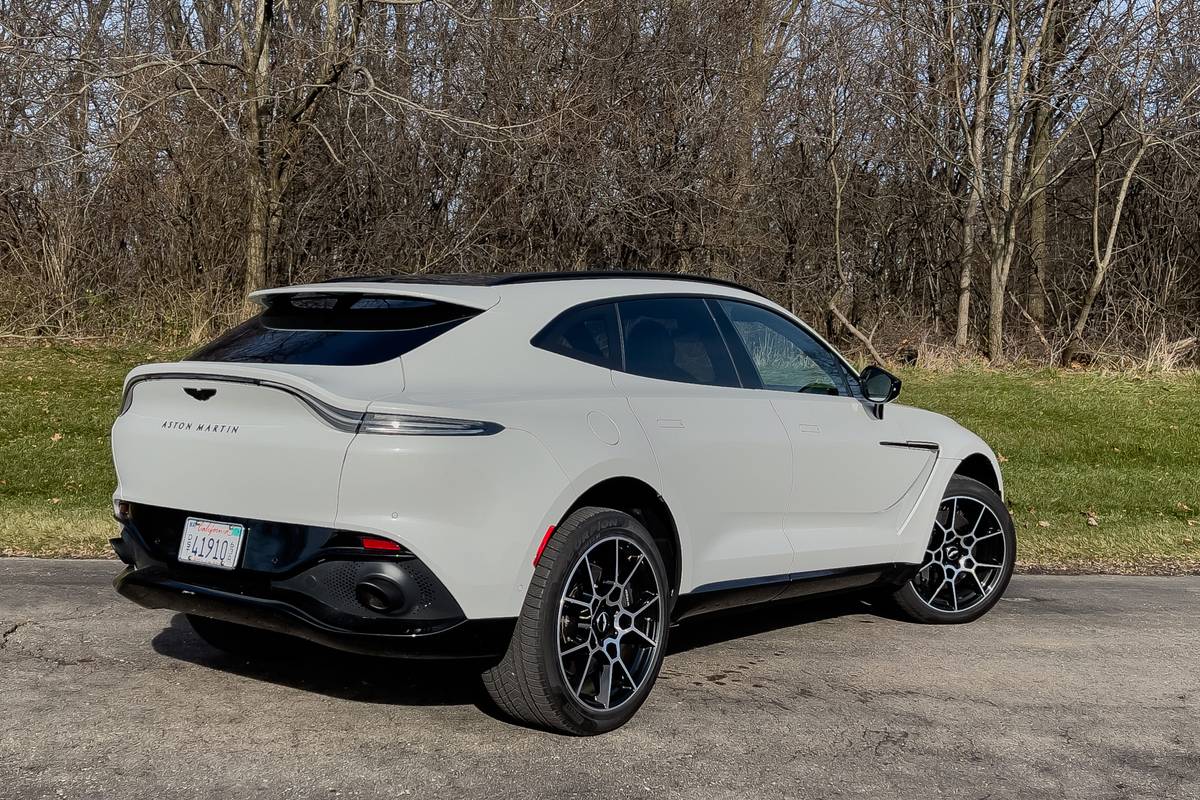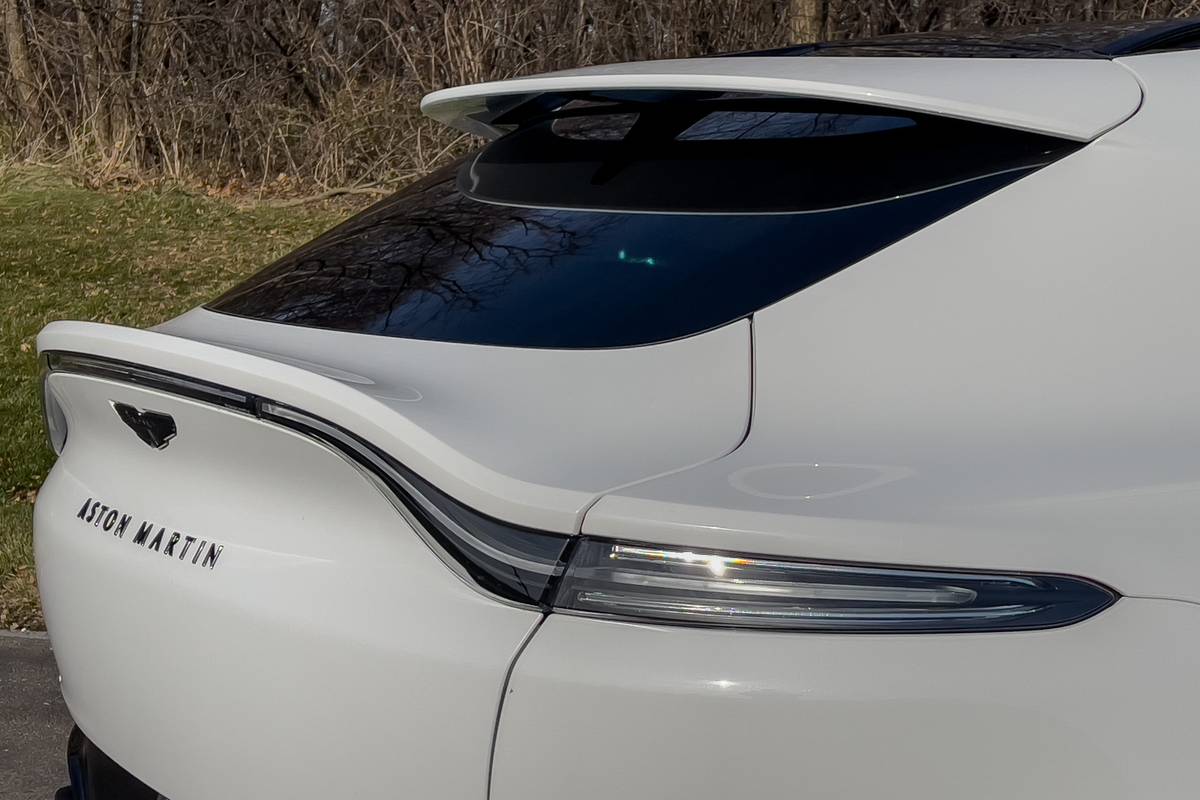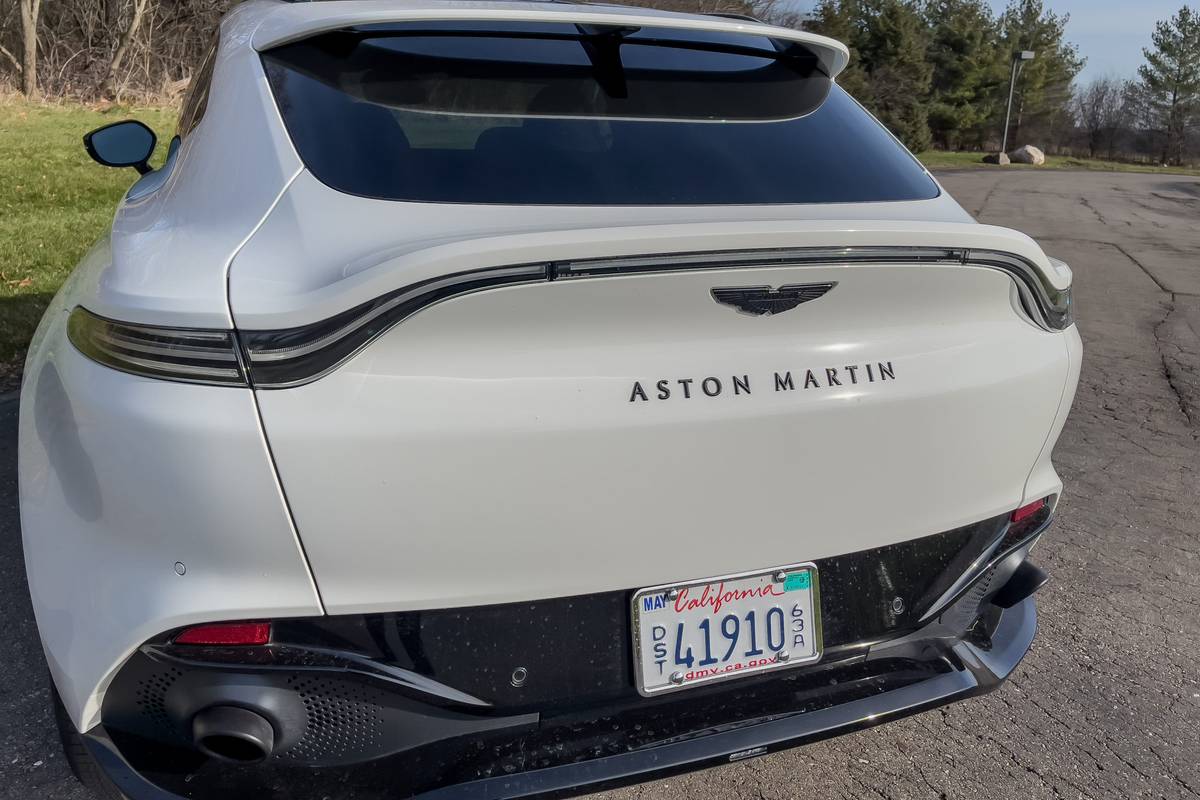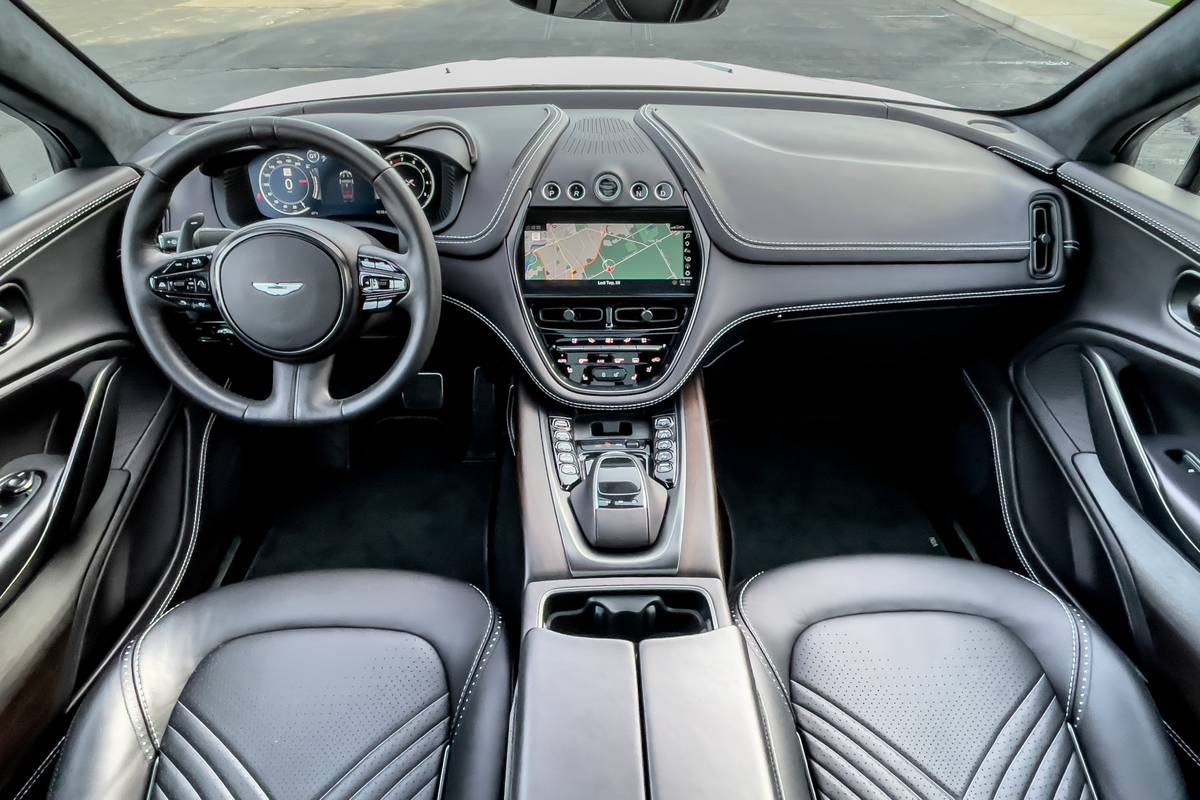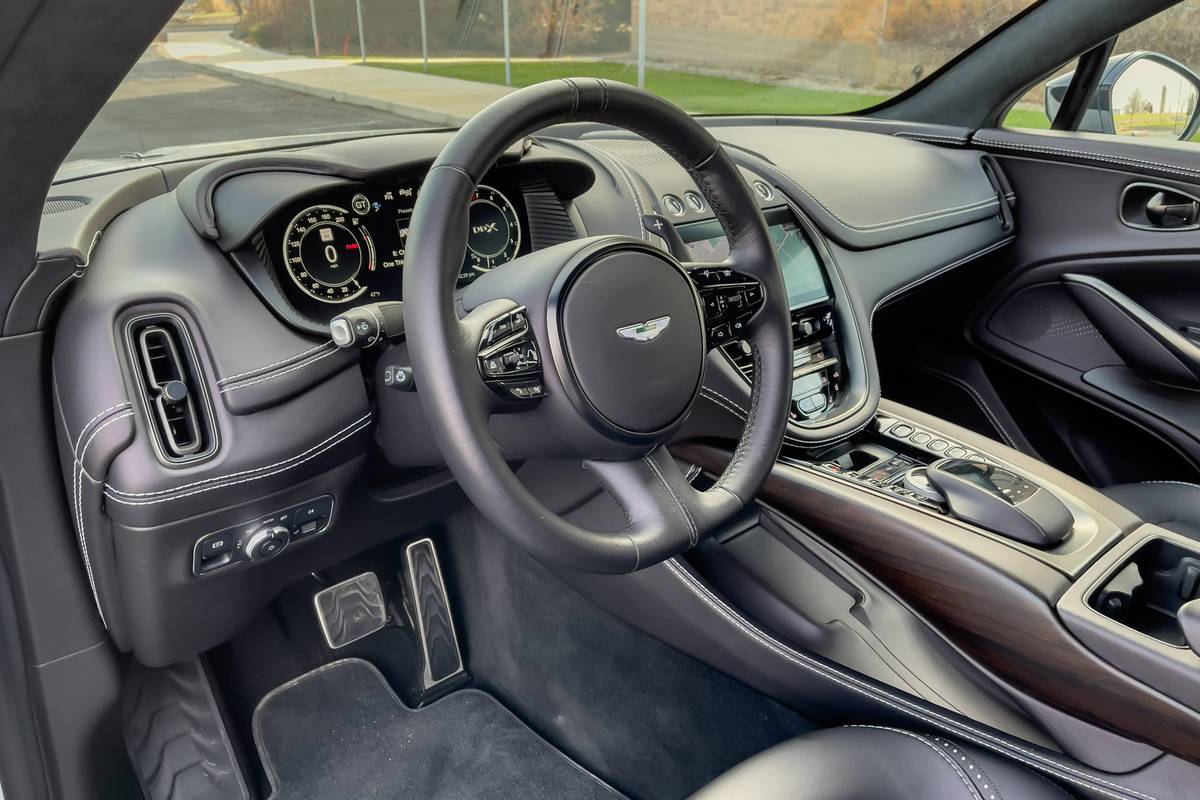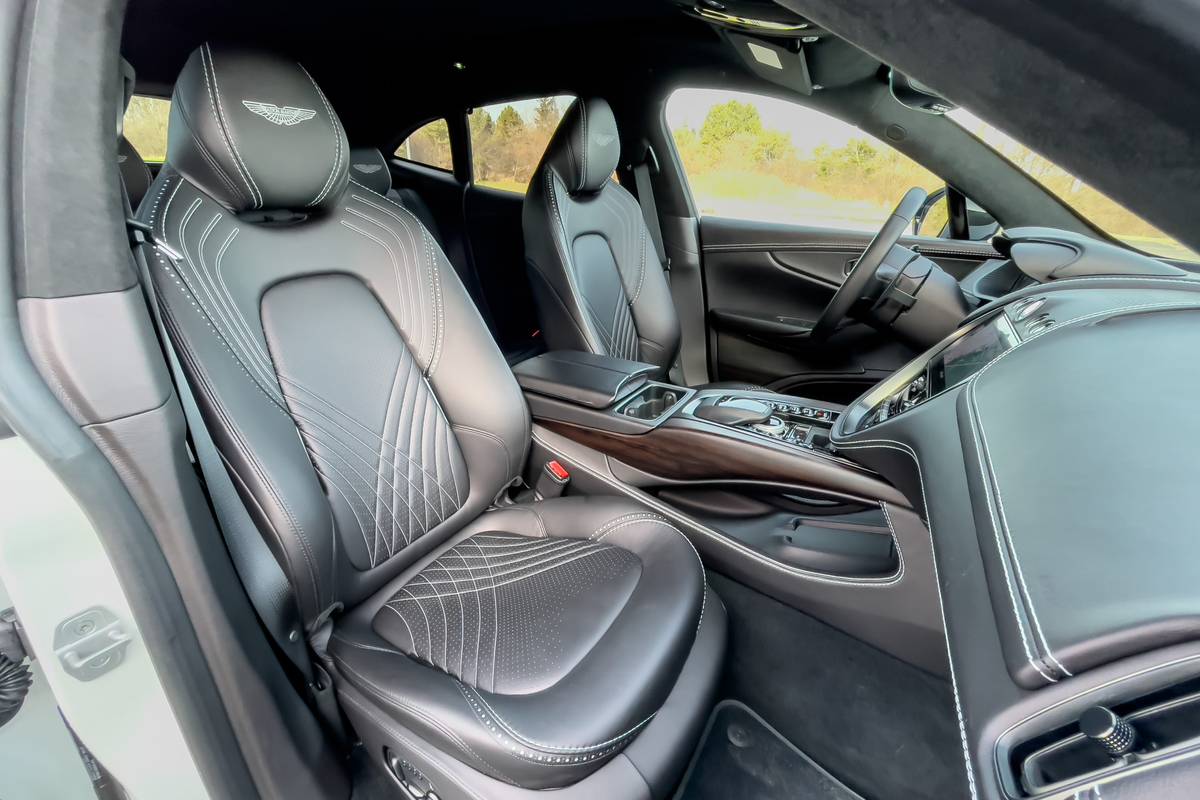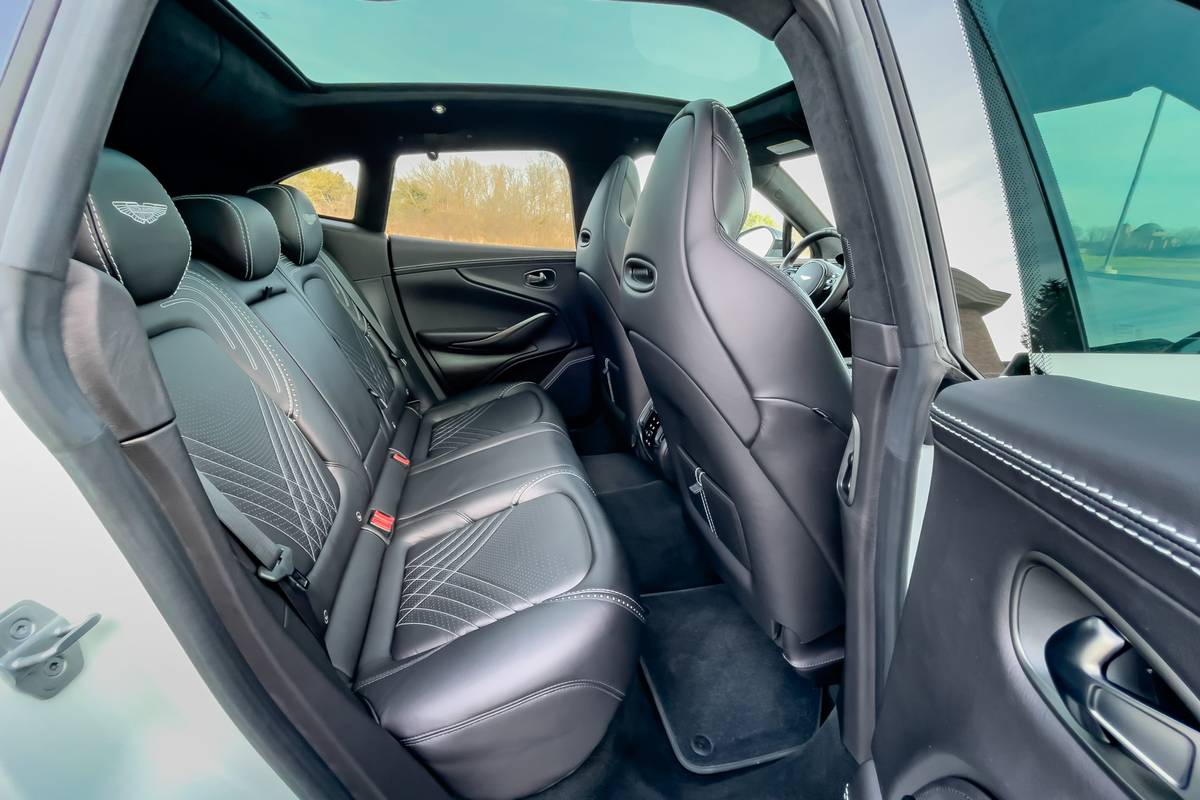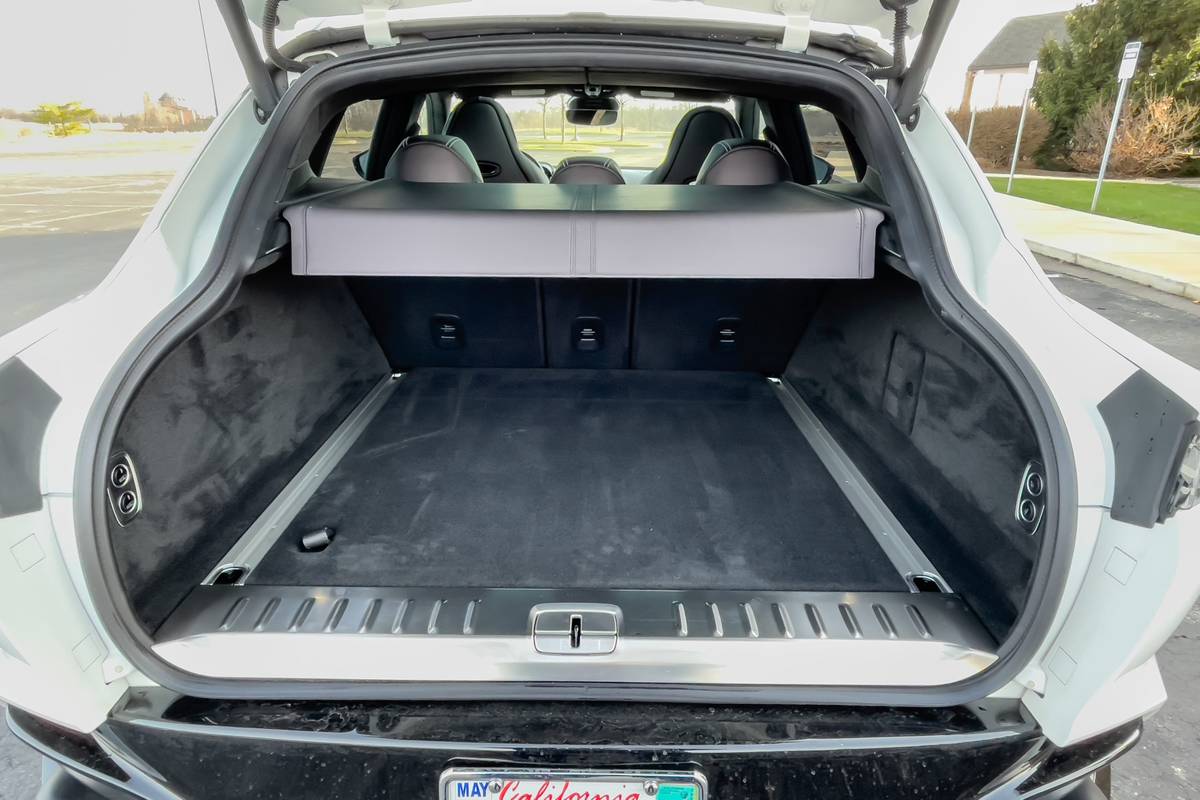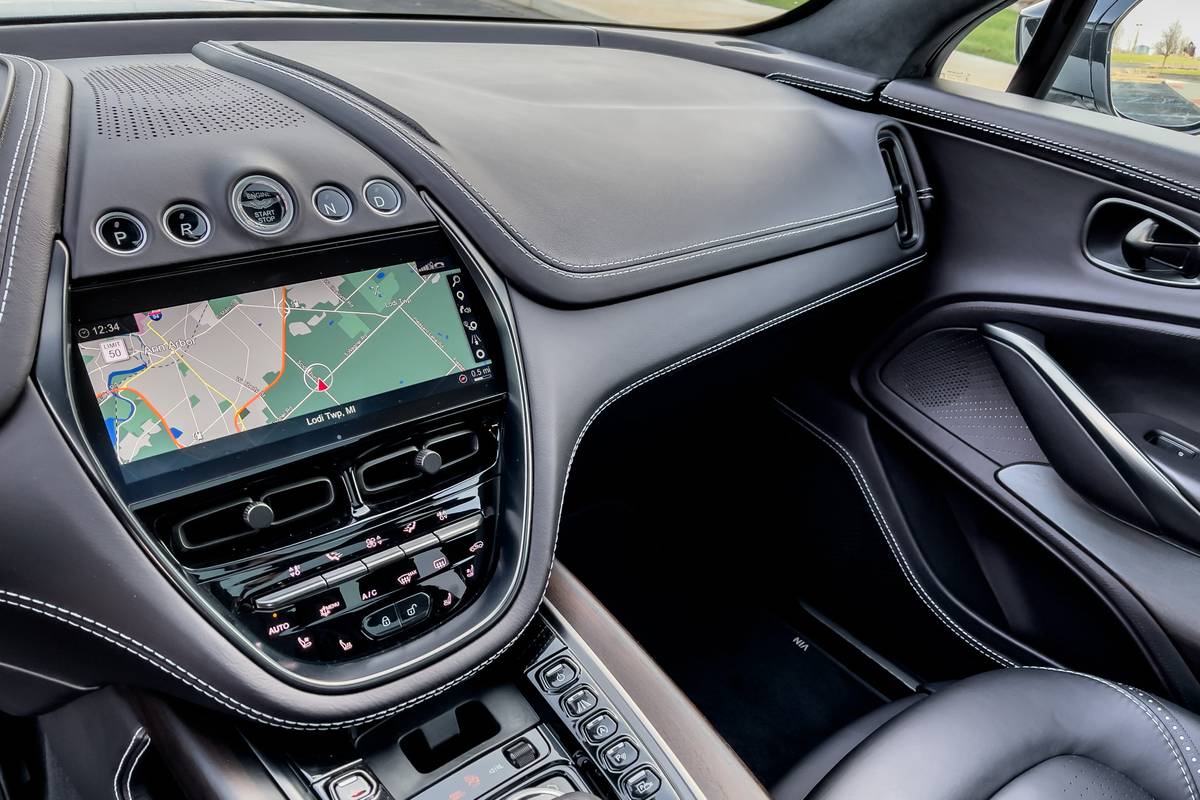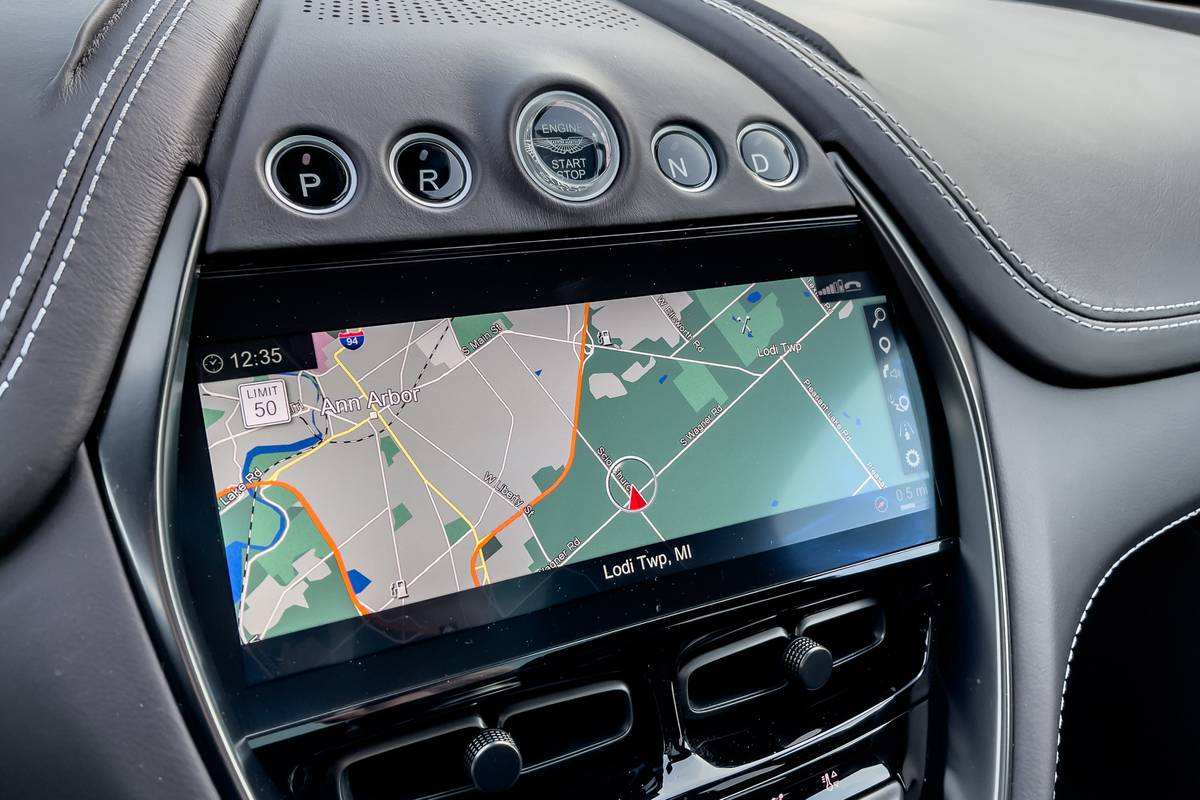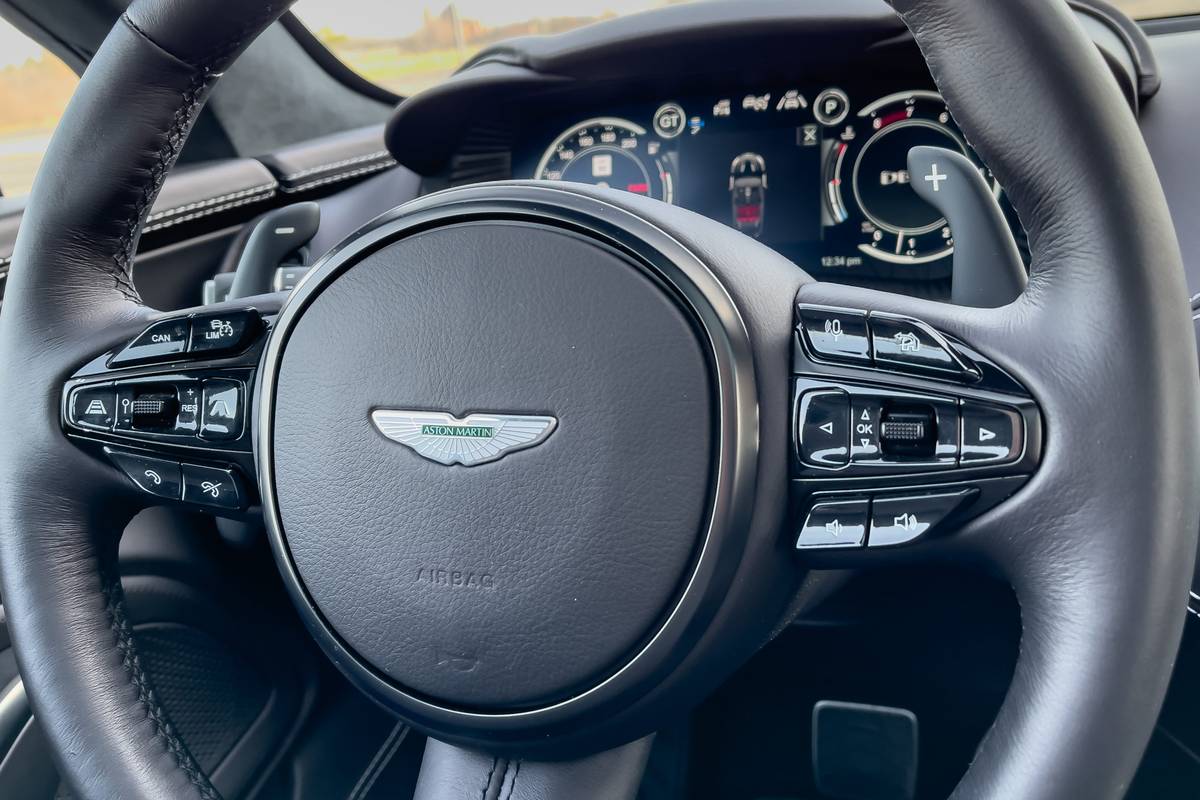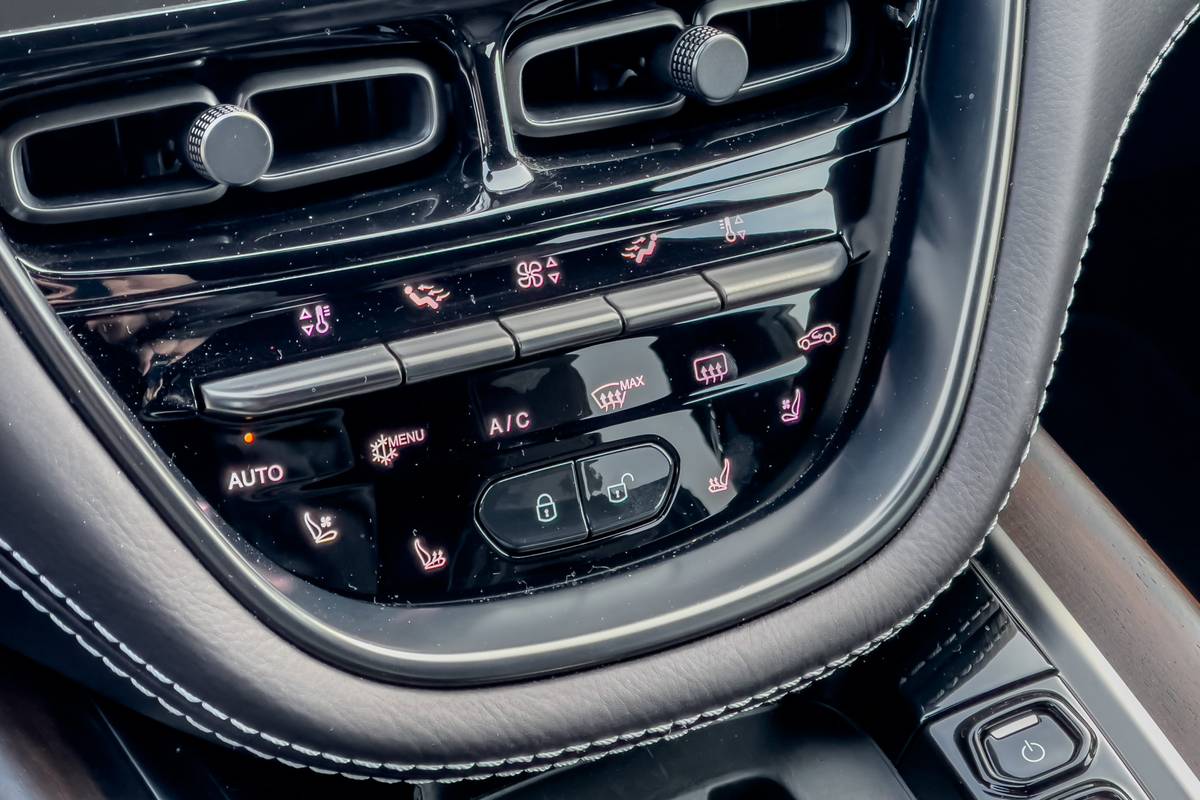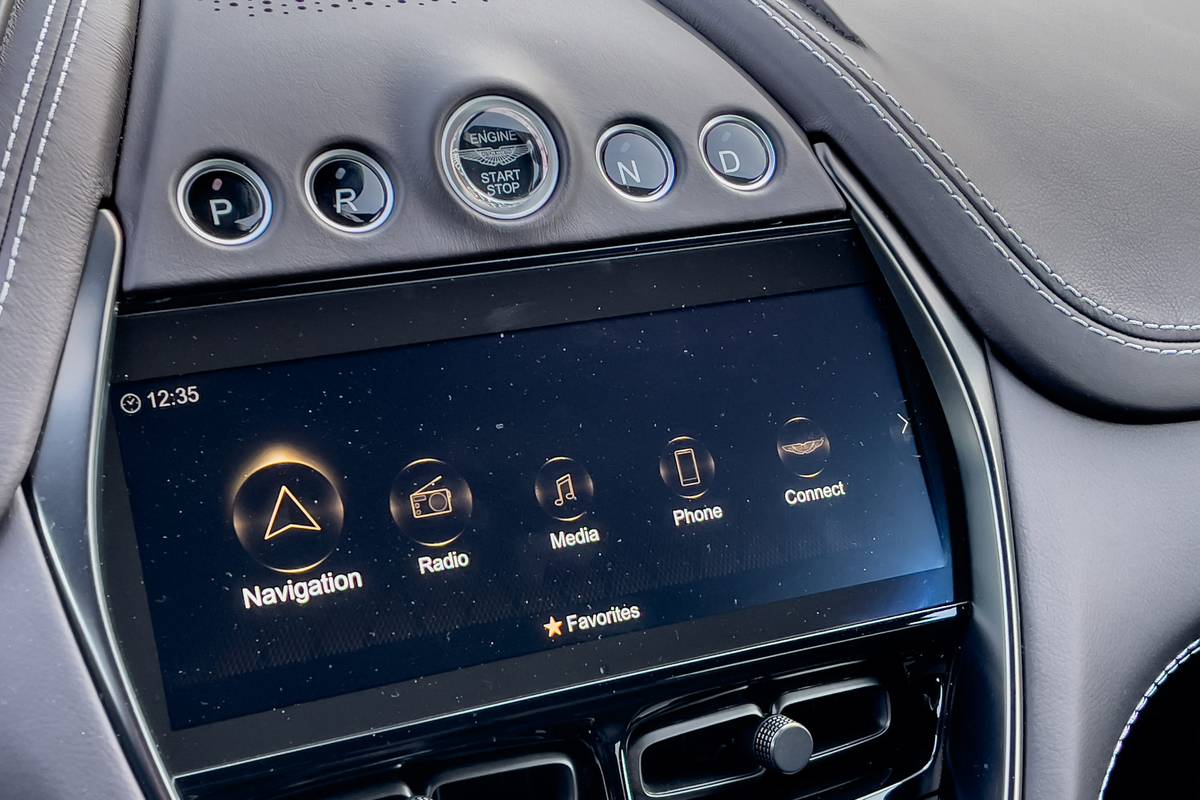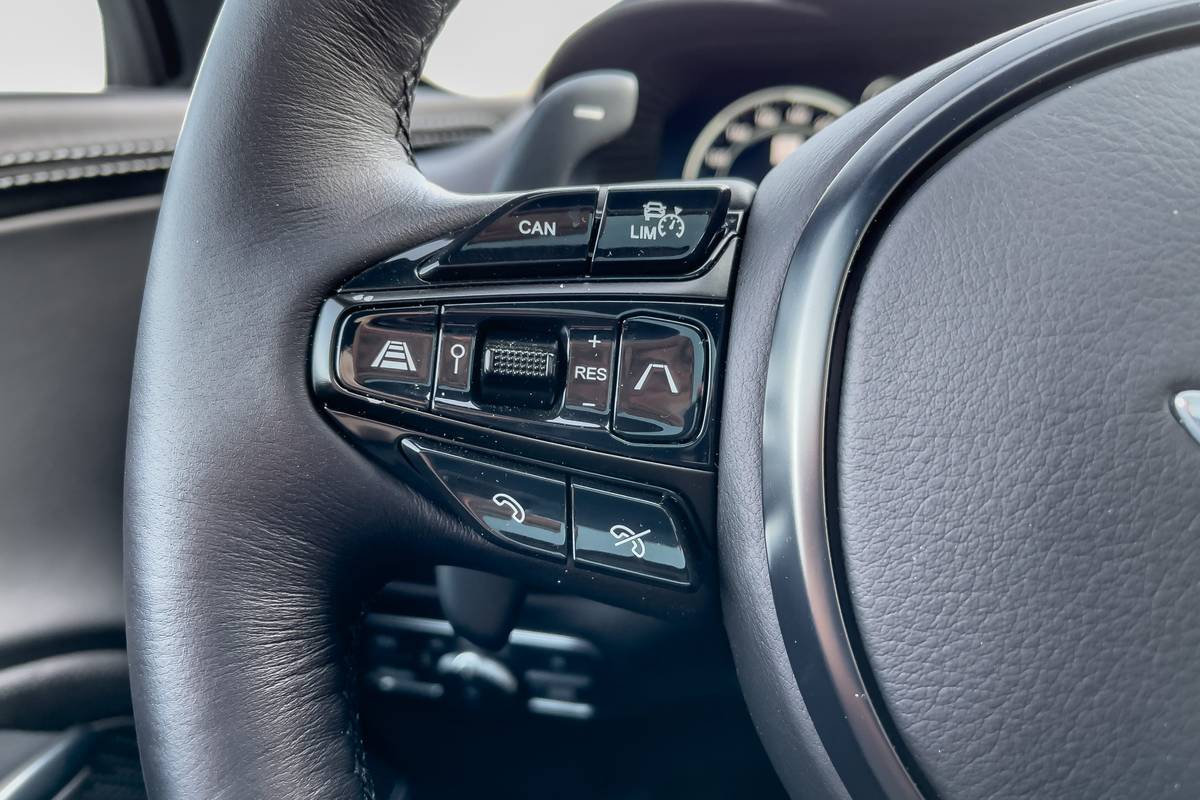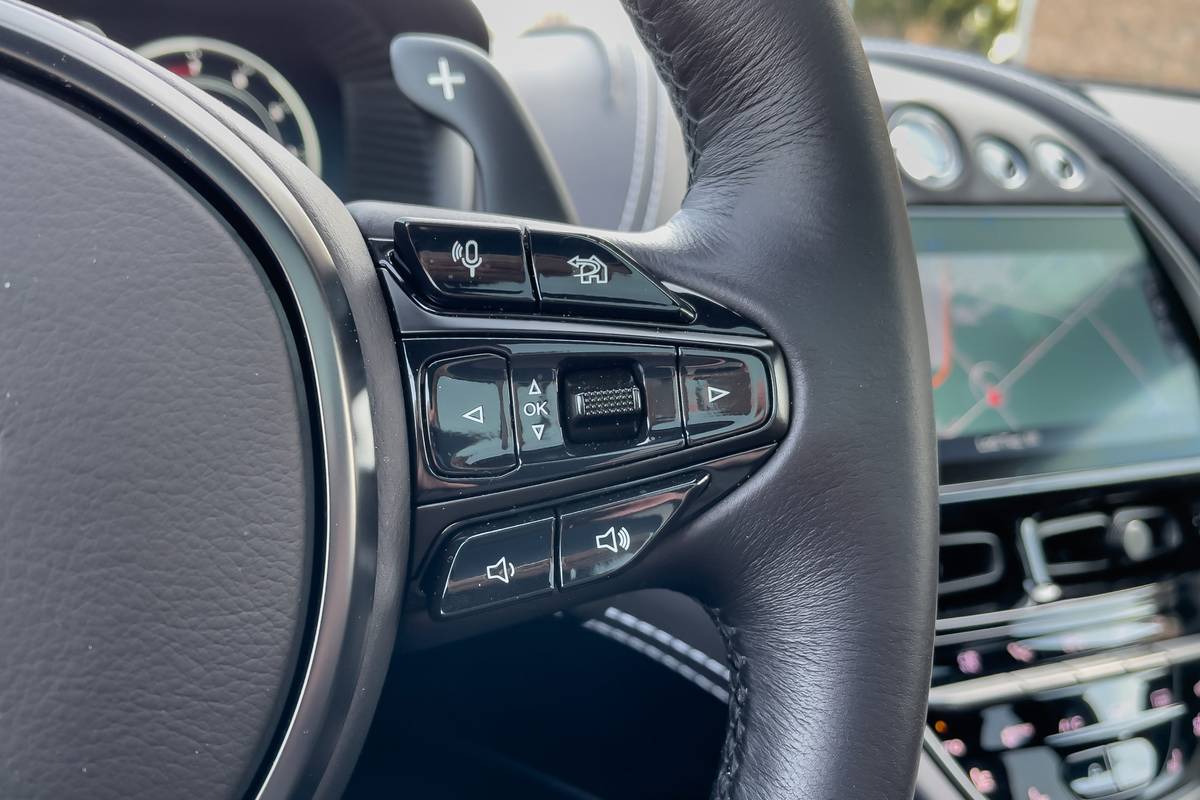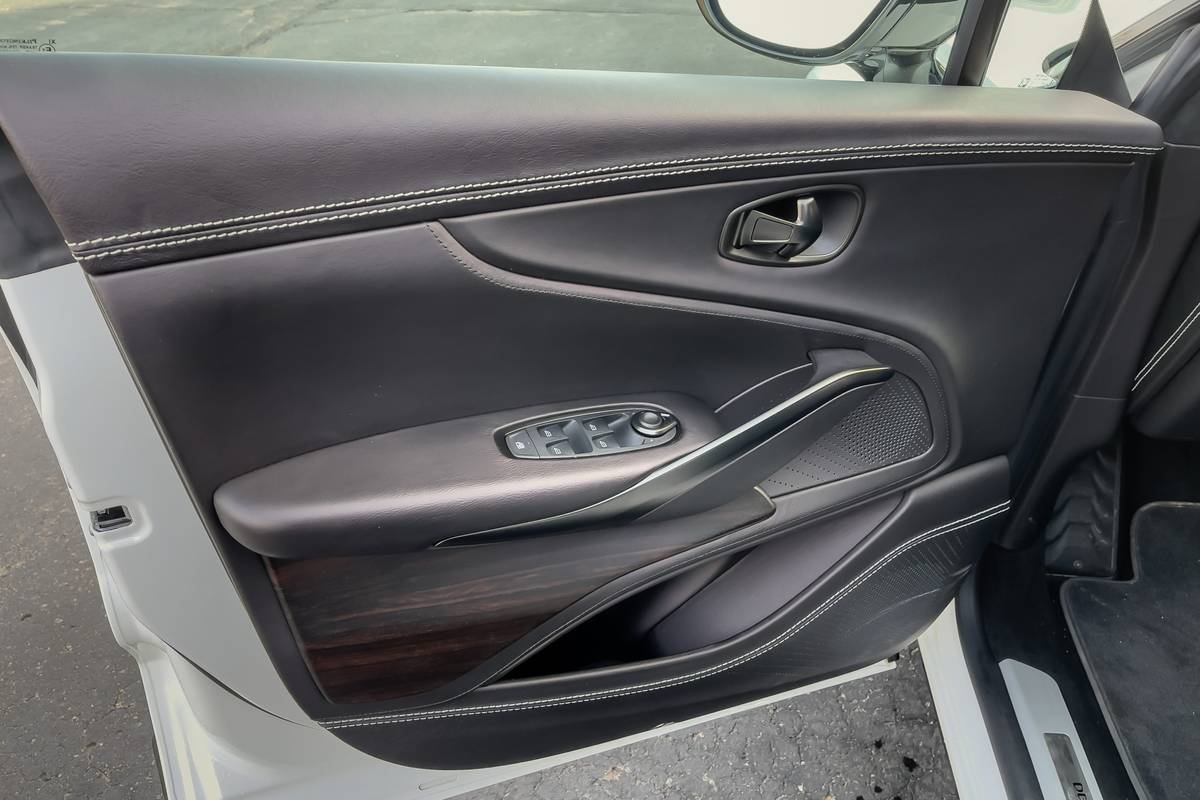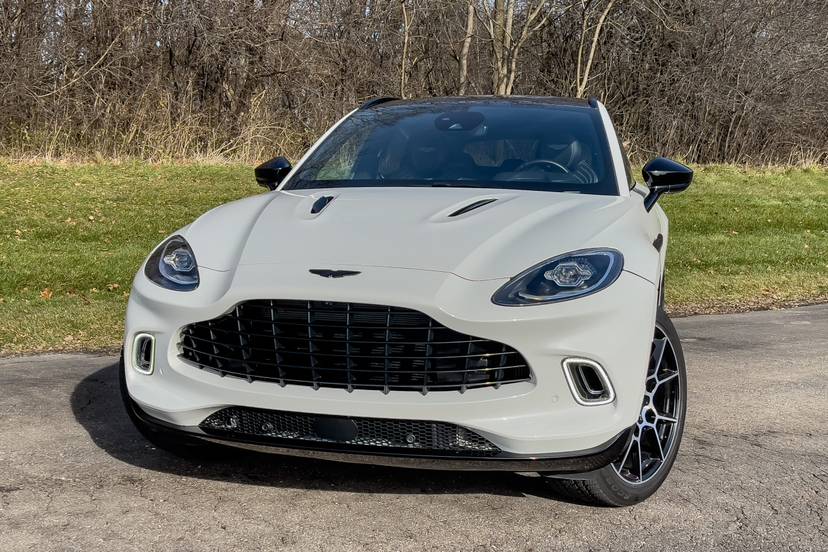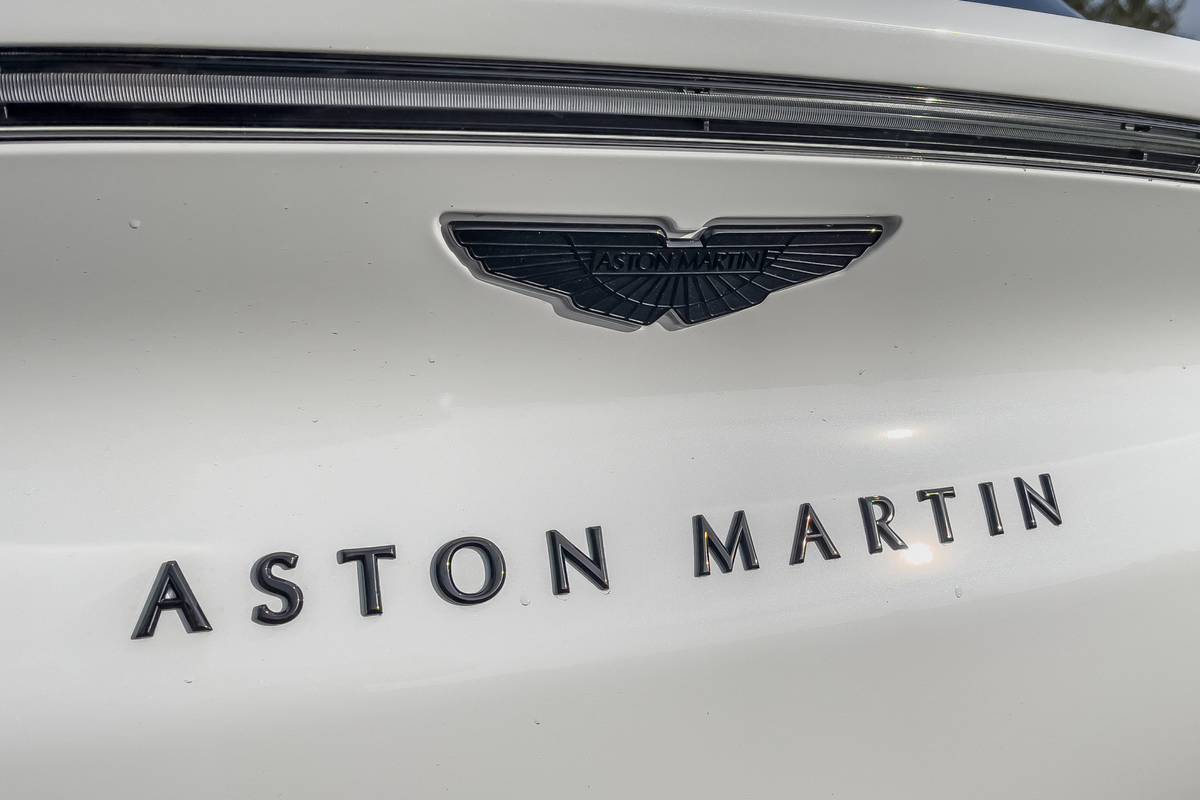
The verdict: The DBX is an outstanding first-ever SUV from a luxury coupe brand held back only slightly by already-outdated interior electronics.
Versus the competition: Just as stylish, customizable, fun to drive and head-turning as any of its high-dollar competitors — and only a little more fussy to drive on a daily basis.
Has the Porsche Cayenne Turbo gotten too common? Is the Bentley Bentayga too flashy? Is the Lamborghini Urus just a little too much for you? Is Mercedes-AMG’s G-Class just a bit too … boxy? Well, hang on to your Gucci slippers, there’s a new player in town.
Related: What’s New With SUVs for 2021?
Combining the style of a sports car with the ride height of an SUV, the 2021 Aston Martin DBX is a totally new effort from a brand known for stylish, expensive grand touring coupes (and the occasional oddball sedan). The DBX is a five-seat, mid-size ultra-luxury SUV that’s just as pricey as those aforementioned competitors, equipped with a powerful V-8 engine sourced from Mercedes-Benz. Covered in bodywork inspired by Aston Martin’s cars, with a plush, leather-swathed cabin, the DBX is athletic, muscular, stylish — and rare. It’s an interesting option for drivers who don’t want just another Porsche Cayenne. But is it as good as the segment’s stalwarts?
Slinky Bodywork
The idea of a sports car company creating a big, off-road-capable SUV was scandalous when Porsche first did it, but criticism dried up quickly when Cayenne sales took off. Now, some two decades later, the idea of an Aston Martin SUV isn’t exactly outrageous.
The stylists at Aston Martin certainly did their job, creating a look for the DBX that clearly identifies itself from 100 feet away. It sports the Aston family grille and headlights, and an upturned ducktail in back easily references the latest Vantage coupe. The DBX is a testament to what careful attention to proportions and blacked-out areas can do to make a tall SUV look like a swoopy, racy coupe; with a tall greenhouse and acres of vertical sheet metal, the DBX could easily have looked bulbous, ungainly and awkward, but black on the lower body sills and roof create negative space. Its roofline peaks at the top of the windshield and descends from there to the liftgate. Both of these tricks are likewise employed by the Ford Mustang Mach-E in an attempt to make an SUV look like a sporty coupe — and they work.
The overall look sort of resembles a five-fourths scale Ford Escape, and that’s not a bad thing. (Tell me the Ford Fusion and Aston Martin Rapide don’t have that same resemblance.) Most important for a vehicle like this, the DBX turns heads — even in the rather unflattering Stratus White color my test vehicle was painted. The SUV just looks really good, with a presence that would easily put it out front at a fancy restaurant or ritzy nightclub, maybe next to a Lamborghini Urus. A vehicle this expensive should be unique, and the DBX manages to achieve that without being gaudy or ungainly like a Bentley Bentayga.
British Style, German Muscle
The beating heart of the Aston Martin DBX might already be familiar to luxury car fans: a Mercedes-AMG-sourced twin-turbocharged 4.0-liter V-8 engine. It’s tuned to Aston’s liking, with a unique exhaust note that makes it sound considerably healthier and more vociferous than any AMG vehicle I’ve heard it in. Thus tuned, mated to a nine-speed automatic transmission and permanent all-wheel drive, it packs a 542-horsepower punch. This is the standard engine in the DBX (the more powerful DBX707 has just been unveiled), and Aston Martin says it gets the big SUV from 0-60 mph in 4.3 seconds on its way to a top speed of 181 mph.
But those are just numbers on paper. The visceral experience of the V-8 is so much more; it’s a fantastic powertrain that’s able to trundle around town without much drama, as well as move the big SUV in ways you wouldn’t expect.
The driving experience in the DBX is mostly outstanding. It’s quiet when you want it to be, like flying down an interstate at high speed, then rowdy and raucous when you don’t want serenity, like when peeling away from a stoplight to entertain the kids in back. The steering is surprisingly heavy in terms of effort, but it provides rewarding feedback for a vehicle like this.
Oddly, the same thing cannot be said of the brakes, which are soft and mushy. They don’t provide much confidence — something you generally want more of in a vehicle with this much potential speed and heft. Ride quality is exemplary for a sport-oriented vehicle thanks to an adjustable air suspension and electronic active roll control, proving the mission for the DBX is similar to the one assigned to Aston Martin’s coupes: It’s a grand touring car, not a pure sports machine.
The DBX is meant to deliver both comfort and entertainment, never forgetting its luxury roots nor straying too far into cushy Bentley territory. It can even go off-road courtesy all-wheel drive and the ability to raise itself on its air suspension. Given that it comes with standard summer tires, however, the idea of a DBX seeing anything more challenging than a gravel driveway is laughable. Just keep it on the pavement, where its bespoke Aston Martin SUV platform and styling combine with that Mercedes powertrain and suspension technology to make an unquestionable success. With the lone exception of the brakes, this is a fantastic machine to drive.
Opulence and Obstinance
The cabin is pure Aston Martin, and that’s both a good and a bad thing. There’s sumptuous leather slathered over just about everything, and it’s stitched, quilted and patterned in ways that make it obvious this is a hand-built British luxury machine, not a mass-produced generic crossover. It looks and feels special inside, from the gorgeous, plush seats front and rear to Aston Martin’s unique buttons and gauges. And don’t let these photos of my test car’s deep black interior fool you: There are some vivid interior options that are far more striking than the dour black hides in my test DBX. That said, it also feels like many of Aston’s coupes inside, with flimsy climate vents, plasticky buttons and switches that aren’t quite as slick as they should be.
Now the really bad part: It seems the powertrain isn’t the only bit of kit that Aston Martin borrowed from Mercedes — it took the electronics and multimedia systems, too. Apparently, Mercedes wasn’t feeling quite as generous here, as it didn’t sell Aston Martin its latest and greatest MBUX system. Instead, the DBX uses a multimedia system based on the automaker’s former COMAND system, which is nearly a decade out of date — making it a surprising find in a brand-new, clean-sheet SUV.
Why is this bad? Because it simply doesn’t work nearly as well as the latest systems on the market. For instance, its 10-inch multimedia display isn’t a touchscreen; you have to use either the steering-wheel controls or a rotary controller in the center console to move around the screen — an approach now abandoned by nearly every other automaker. Connecting a mobile device was only sporadically successful, and finding functions I wanted required knowledge of the menus and a lot of exploration — not easy to do on the fly. Apple CarPlay is present, but using it without a touchscreen is tedious. Aston Martin should’ve kept shopping for a supplier in this department; Polestar’s system, using Google OS, is a good example of what can be done with a third-party provider.
In short, the Aston Martin DBX is a truly rewarding and entertaining SUV to drive, but a fussy and disappointing one to use. Such foibles are not as big a deal on the automaker’s low-volume specialty luxury coupes, but five-seat luxury SUVs tend to get a lot more daily use, meaning multimedia systems, phone connectivity and general user-friendliness become much more important. It’s in these areas that the DBX needs to improve to be truly competitive with the likes of Bentley, Mercedes-Benz and Porsche.
More From Cars.com:
- Aston Martin Extends Warranty Coverage During Coronavirus Pandemic
- Wireless Apple CarPlay and Android Auto: Where Are They Now?
- 2021 Bentley Bentayga Review: Upgrading the Upgraded
- 2019 Lamborghini Urus First Drive: Supercar Cattle-Prodding an SUV
- More Luxury News
Priced to Compete
The 2021 DBX starts at $179,986, including the most jaw-dropping destination and delivery fee I’ve ever seen ($3,086). The base price does at least include a decent number of automatic safety systems, which is something you don’t often see in German competitors. Automatic emergency braking, lane departure warning and steering assist, adaptive cruise control and blind spot warning are all standard on the DBX.
The areas where options are available tend to be about personalization. My test vehicle included nearly $38,000 worth of options, mostly for things like paint, stitching, interior colors, black trim pieces and wood inlays. The final price tag was $218,386 — a hefty sum, but it’s the price one pays for such personalization. More importantly, it’s in line with competitors like the Bentayga, G-Class, Urus and top trims of the Cayenne.
The DBX is a surprisingly good first-ever SUV from Aston Martin. It’s a sexy, stylish and entertaining alternative for affluent SUV buyers who simply want something different. The success of its mission — providing a highly lucrative and much-needed revenue stream for the luxury automaker (a strategy that worked brilliantly for Porsche) — seems all but guaranteed. With a few more tweaks to usability and some updated tech, it would be an easy choice to make.
Cars.com’s Editorial department is your source for automotive news and reviews. In line with Cars.com’s long-standing ethics policy, editors and reviewers don’t accept gifts or free trips from automakers. The Editorial department is independent of Cars.com’s advertising, sales and sponsored content departments.











